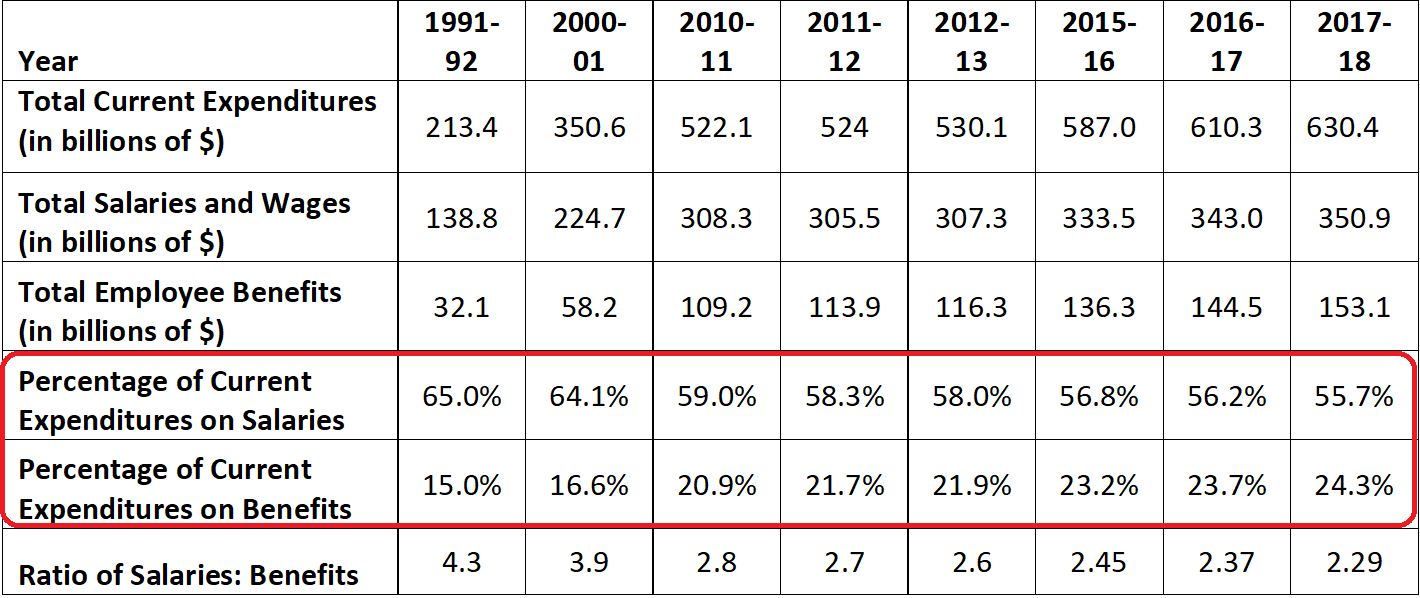
The Census Bureau’s Annual Survey of School System Finances compiles total education spending and revenue across the entire country. The latest data, released earlier this week, shows teacher benefits continue to eat away at school budgets.
In total, public school expenditures have tripled since 1992 (including inflation). The table below shows how those dollars are being spent across broad categories. Figures for all years reflect current expenditures and do not include capital costs or debt.
As the table shows, school districts are spending more and more of their budgets on employee benefits, at the expense of base salaries and wages. Over the long term, the percentage of education budgets going toward salaries fell from 65.0 percent in the 1991-92 school year to 55.7 percent in 2017-18. Over the same time period, the percentage of school district budgets going toward employee benefits increased from 15.0 to 24.3 percent.
As a share of total expenditures, benefits now eat up nine percentage points more than they did in 1992.
These are steady, long-term trends, but they're no less troubling. Increased spending on benefits is one reason teacher salaries have been flat, in real terms, over the last few decades. Benefits are also a less efficient use of money than salaries, since teachers value $1 in take-home pay more than they do $1 in benefit spending. Worse, much of these rising benefit costs reflect the growing burden of debt costs, not actual benefit enhancements for teachers and retirees.
Updated on May 18, 2020
